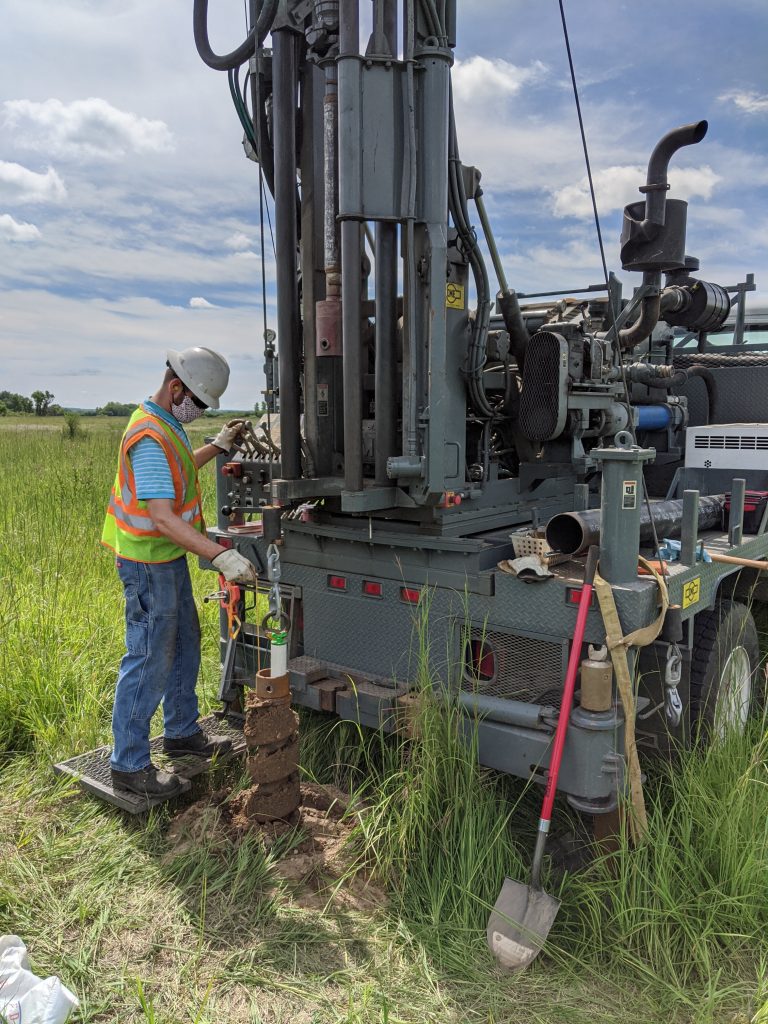by Matt Meyer, MDNR
The COVID-19 Pandemic has taken the world by surprise, and has altered the way many of us do our jobs and live our daily lives. Even the most ordinary tasks have become more complex and require an adjusted way of thinking and doing to perform these tasks safely. Observation well drilling at the Minnesota DNR has certainly been affected by the pandemic too, but the DNR’s observation well drilling team has found a way to continue its work in a safe, somewhat-limited fashion.
The Minnesota DNR operates a statewide network of groundwater observation wells in order to monitor long-term water level trends of many of the different aquifers in the state. This network requires constant maintenance, as new monitoring locations are identified, existing locations are expanded or enhanced, and older low-functioning wells are sealed. Over the past few years, the DNR has been expanding the observation well network to fill gaps, adding approximately 30-50 new wells per year around the state.
When the COVID-19 outbreak first appeared in March, most DNR staff were required to work from home. The DNR drilling team parked its drill rig and ceased all field operations. Once restrictions were slowly lifted in early summer, DNR field staff slowly began returning to the field for basic maintenance activities, but in a much different way. Vehicles were restricted to only 1 occupant. Overnight hotel stays were only allowed by special approval. And masks were required anytime staff were in an indoor space with others, or within 6 feet of one another in an outdoor space.

Beginning in late July, well drilling activities resumed, but only on a limited basis. One drilling project that was awarded to a private well contractor before the COVID-19 outbreak hit was finally allowed to proceed. The DNR drill rig also returned to the field, doing some well maintenance and a few shallow well installations that were within 1-2 hours of the shop (so as to not have to stay overnight in a hotel). Since well work is outside, usually in rural areas, staff are generally able to maintain a 6-foot distance from each other and from the public. When the drilling team members are both working near the back of the drill rig, extra effort is made to maintain a safe distance from one another.
While wearing facemasks is new for many people, they are not new to the well drilling sector; some drilling crew members wear masks while grouting or mixing drilling mud to avoid breathing in fine airborne particles from the bentonite and cement products. Since the COVID-19 outbreak, now there is another reason for drilling team members (and everyone else) to ‘mask up.’ Stay safe Minnesota!
MGWA is committed to developing a just, equitable, and inclusive groundwater community. Click on the button below to read MGWA’s full diversity statement.